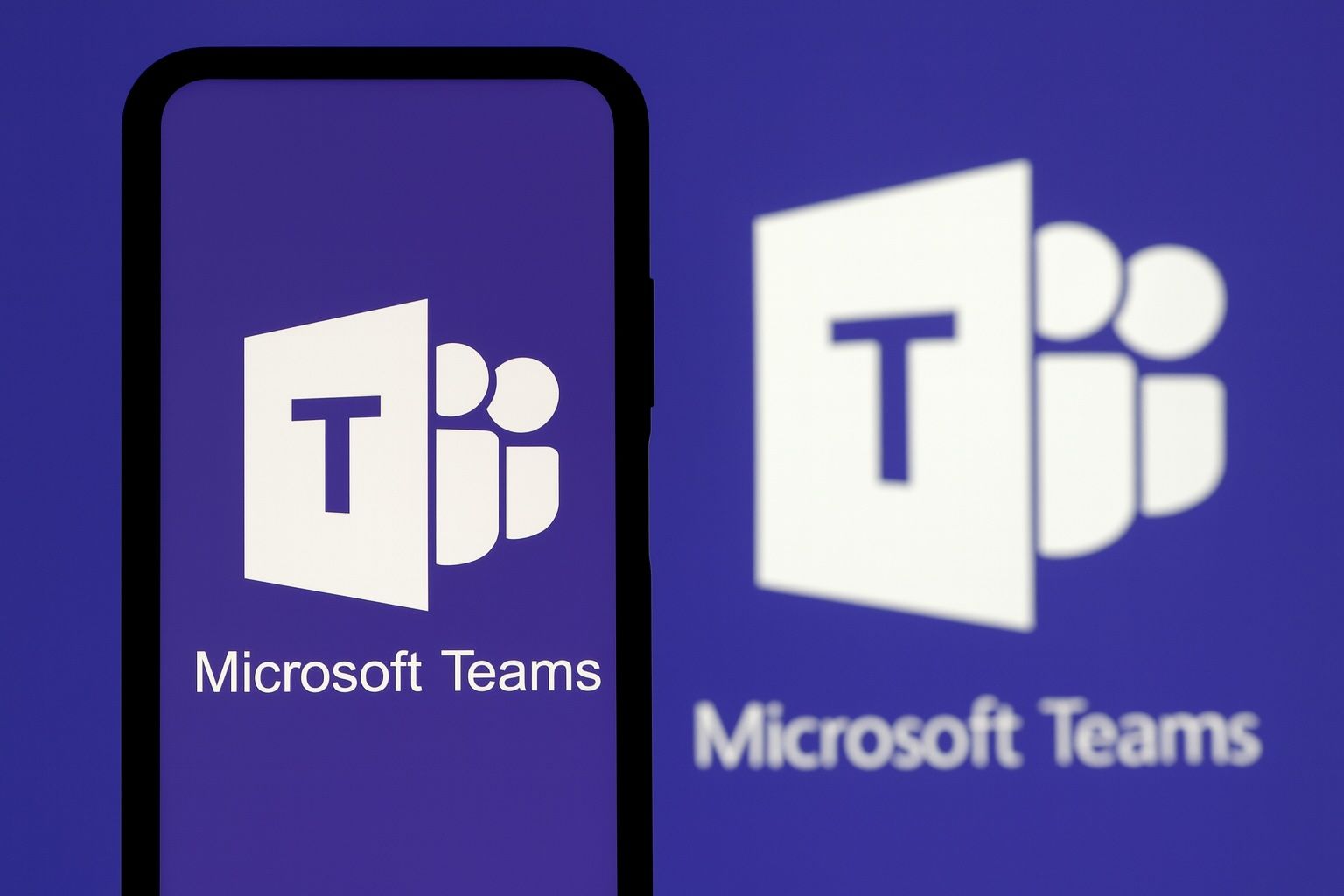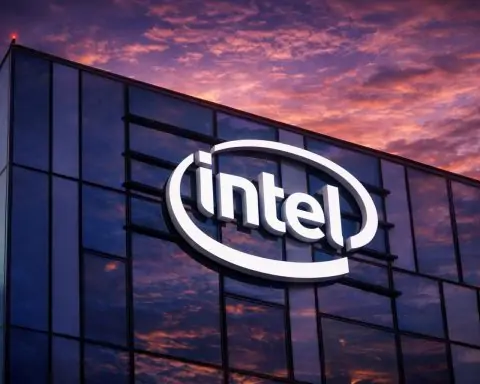- Teams to auto-track office presence: Starting December 2025, Microsoft Teams will use office Wi‑Fi signals to automatically mark when an employee is physically in the office – effectively telling managers who’s onsite vs. working remotely [1] [2].
- Opt-in feature (for now): Microsoft says the location-tracking will be off by default; IT admins must enable it and employees must consent (opt-in) to share their work location [3] [4]. This is meant to ensure transparency and avoid any secret monitoring.
- Surveillance or convenience? The company pitches it as a convenience for hybrid teams – helping colleagues find each other in person if needed [5]. But critics slam it as a “lapdog” for bosses that could easily be misused to check up on staff [6] [7]. One tech site warned “Teams is about to tattle on you” if you cherish the peace of home office [8].
- Privacy and legal concerns: Experts say tracking who’s in-office vs. not treads into sensitive territory. Microsoft insists it won’t use GPS or constant location pings, only the Wi‑Fi status [9]. Still, labor lawyers stress this touches on employee privacy rights – continuous monitoring is lawful only with a “compelling reason,” which a normal office job usually doesn’t provide [10]. In Europe, any such tool would require clear consent, transparency, and a works council agreement to prevent illegal surveillance [11].
- “Just because you can…” The backlash has been swift. “Oh, dear!” wrote Forbes, calling it “an object lesson for big tech: just because you can doesn’t mean you should.” The simple roadmap update has already sparked unhappy headlines and alarm among remote workers [12].
- Return-to-office push context: This move comes as many companies – including Microsoft itself – are dialing back remote work. In September, Microsoft told staff living within ~80 km of an office that by Feb 2026 they must come in at least 3 days a week, claiming in-person collaboration boosts results [13]. Some firms are even pouring money into flashy office perks to lure people back, seeing remote work as weakening “employee connections” with teams [14]. The new Teams tracker underscores how tech might enforce these policies, raising the stakes in the office vs. home tug-of-war.
- Microsoft stock and outlook: So far, Wall Street isn’t fazed by the controversy. Microsoft [MSFT] shares closed around $523.61 on Oct 24 [15] – near all-time highs – and analysts remain bullish. The 12-month consensus target is ~$617 (≈18% above current) [16], reflecting optimism in Microsoft’s AI and cloud growth. The Teams update alone is unlikely to dent investor confidence, though Microsoft will need to manage the reputational risks of pushing the feature.
Teams’ New “Big Brother” Feature: How It Works
Microsoft is poised to roll out a new Teams feature by end of 2025 that can automatically detect an employee’s location based on Wi‑Fi networks. In plain terms, if your laptop or phone connects to the company’s office Wi‑Fi, Teams will flip your status to show you’re “in the office.” Conversely, if you’re on home or public internet, it would indicate you’re remote. Microsoft’s official roadmap description sounds innocuous and “neutral”: “When users connect to their organization’s Wi‑Fi, Teams will automatically set their work location to reflect the building they are working in.” [17] This will update a user’s status without any manual input.
The ostensible goal is to remove “confusion” about where colleagues are working on a given day [18]. Instead of messaging a coworker only to find they’re at home (or vice versa), one could check Teams and immediately see if that person is in the office. Microsoft says this should streamline hybrid work coordination, making it easier to find teammates for in-person meetings or know who’s available onsite [19].
However, the same capability can double as a monitoring tool for management. It effectively creates an attendance log of who came into the office and who didn’t. And that is exactly why the update is raising eyebrows across the tech world and beyond.
No Stealth Tracking – But “Snitch” Fears Remain
To allay privacy worries, Microsoft has emphasized that the new location-tracking will not be automatically enabled. “This feature will be off by default,” the company notes, requiring administrators to switch it on and then users to agree to share their location [20]. In theory, this means companies cannot start tracking staff office presence without employees knowing – it’s meant to be an opt-in, transparent status indicator, not a covert surveillance system.
Microsoft also clarified that Teams will only note whether you’re connected to the office network (hence presumably on-site). It won’t constantly geo-locate employees beyond that trigger [21]. If you’re not on the corporate Wi‑Fi, Teams won’t attempt to track your GPS coordinates or whereabouts. In other words, it’s more of a binary status (in office vs. away) than a full-fledged location tracer.
Despite these assurances, many workers and analysts are unconvinced. Just the existence of this capability has people unnerved. “What’s technically possible often ends up used sooner or later,” one commentary noted pointedly [22]. It doesn’t help trust that the feature is seen as benefiting bosses more than employees. Microsoft’s marketing talks about helping colleagues know where you are – but as Golem.de dryly observed, it’s obvious this can be used to “determine which employees are on site and which remote” at a glance [23]. Managers get a convenient dashboard of attendance.
Indeed, Windows Central bluntly branded the feature “a lapdog for your boss — automatically snitching on your live location.” [24] Tech writers have already started calling it “Big Brother”-esque. Tom’s Guide warned those enjoying a peaceful home office that Teams is about to “tattle” on them, potentially shattering the sanctuary remote work provides [25]. The snitch jokes underscore a real concern: will this erode the culture of trust for remote staff?
For Microsoft’s part, the company says admins should not enable the tool without employees’ knowledge [26]. The interface will presumably show users that their work location is being shared. Microsoft also indicated the feature will only flag “in office” or not – it’s not a precise tracker of every move [27]. (For example, it’s not using your phone GPS to follow you around, just checking network connection.) And importantly, it’s not mandated – organizations can choose not to use this at all if it’s not a fit for their culture.
From Hybrid Helper to “Bossware”? – The Debate Heats Up
The introduction of this Wi‑Fi status feature comes at a sensitive time in workplace culture. Over the past year, many companies have been pulling back on remote work flexibility and insisting on more in-office days. Microsoft itself is a prime example – in September it announced that employees living within 50 miles (80 km) of an office must come in at least 3 days a week by Feb 2026, arguing that face-to-face collaboration yields better results [28]. This trend is industry-wide: some banks and corporations are investing heavily in upgraded office spaces (think on-site perks like gyms, catered meals, even golf simulators) to entice workers back, perceiving that work-from-home weakened employees’ connection to colleagues and bosses [29].
In that context, a tool that automatically flags who isn’t in the office could easily become a form of pressure. Employees might fear that choosing to work from home (even when allowed) will put a target on their backs if the app clearly shows they’re often “away.” Presenteeism culture – the notion that being seen in the office equals working hard – could be unintentionally reinforced by Teams. Some employees already suspect that strict return-to-office mandates are a way to prompt attrition (“stealth layoffs”), by pushing out those who can’t easily comply [30]. A visible attendance status might add to that anxiety.
On the other hand, some managers argue that if an employee is supposed to be in-office on certain days, this feature simply provides clarity. Rather than relying on the honor system or manually checking in, it automates the process. “The idea is simple,” wrote Forbes’ Zak Doffman – to eliminate confusion about where someone is working. But Doffman immediately added: “Microsoft has some bad news for millions of employees… Just because you can doesn’t mean you should.” [31] In other words, even if this feature is straightforward, it may do more harm than good for morale.
Foiling the Wi‑Fi Workaround
Notably, the emergence of this tech comes after some well-publicized attempts by workers to game location policies. During the post-COVID return-to-office push, some crafty employees at Amazon reportedly renamed their home Wi‑Fi SSIDs to mimic the company network – hoping to trick systems into thinking they were at HQ when they weren’t [32] [33]. It was a tongue-in-cheek form of resistance to what they felt was an unnecessary office mandate.
That cat-and-mouse game is directly relevant: if Teams simply keys off Wi‑Fi name, could employees spoof it? Microsoft hasn’t detailed the technical specifics, but Tom’s Guide suspects Teams will do more than read the network name. It might check the network’s unique ID or IP address to verify it’s actually the office router [34]. In other words, changing your home network name to “Contoso Office WiFi” probably won’t fool it. This aligns with Microsoft’s stance that the feature is “neutral” and not easily tricked [35].
However, the very need to discuss Wi‑Fi spoofing shows how distrustful the relationship can become. If employees feel the need to hack around a tracking feature – or conversely, if employers feel they need tech to verify if someone is really in – it signals a breakdown in trust. “The issue comes down to trust and control,” as one German publication put it, asking “how much control is too much?” (fittingly, ingenieur.de titled its article on this “Wie viel Kontrolle ist zu viel?”)
Privacy Law: A “Gray Zone” That Could Blow Up
From a legal perspective, monitoring employees’ location touches on privacy and labor rights – especially in the EU. Europe has strict rules under the General Data Protection Regulation (GDPR) and national labor laws that constrain employee monitoring. Lawyers note that, in principle, a simple location log could be GDPR-compliant if certain conditions are met [36]. Companies would need to obtain employees’ informed, voluntary consent, use the data only for legitimate purposes (e.g. coordinating hybrid work, not spying), and be fully transparent about it [37] [38].
Crucially in countries like Germany, co-determination laws mean works councils must be consulted. “The firm would have to negotiate a works council agreement before activating such features,” explains attorney Niko Härting, since any tool that can be viewed as surveillance falls under employee representation oversight [39] [40]. Without that, turning it on could violate labor law.
Even with consent, there’s skepticism about how “voluntary” it truly is. “If staff feel pressured to agree – for fear of job consequences – then it’s not truly voluntary,” Härting points out [41] [42]. An employee might click “Yes, share my location” out of fear that saying no marks them as not a team player. Such dynamics could make the practice legally “attackable,” the lawyer warns [43]. Regulators and courts would likely frown on any whiff of coercion.
“Da geht es um das Persönlichkeitsrecht am Arbeitsplatz.” (“This is about the right to personal privacy in the workplace,”) “A continuous tracking [of employees] would be unlawful unless there’s a weighty interest of the employer to justify such a deep intrusion – which in a normal office job is hardly ever the case,” Härting told heise online [44]. In plain English, constantly monitoring people’s presence might be acceptable for, say, a delivery fleet (where knowing location is mission-critical for safety/logistics), but not for a typical desk job.
He and other experts stress that if the Teams feature is used, it must be tightly constrained – only to facilitate coordination, not as a metric for performance or attendance enforcement [45]. And any data collected should be minimal (just the status, not exact movements) and well-protected. Otherwise, firms risk not only fines but a “massive loss of trust” among employees [46]. Already, some surveys show workers are wary of digital monitoring. Rolling out a poorly communicated tracking tool could worsen that “Big Brother” fear, causing morale damage that far outweighs any slight productivity gain of knowing who’s in-office.
Microsoft’s Balancing Act – and Investor Perspective
For Microsoft, this is a tricky moment to introduce such a feature. On one hand, as a major provider of workplace software, it aims to help companies navigate hybrid work. Features that bridge the gap between remote and office teams are a natural evolution of productivity tools. (Microsoft isn’t alone here – many HR and collaboration software vendors are adding analytics and status indicators to manage distributed workforces.) There is genuine customer demand for solutions to coordinate who is working where on a given day.
Yet Microsoft also has to be mindful of its image. The company faced criticism a few years ago over its brief introduction of “productivity score” metrics in Microsoft 365 that some likened to employee surveillance. It backtracked and adjusted those features after backlash. Similarly, Teams’ new attendance status will likely get fine-tuned based on feedback. Microsoft has already stated it will require user opt-in – a sign it knows the sensitivity involved [47]. We still don’t know if end users will have controls (e.g. the ability to temporarily hide their location or restrict visibility to peers vs. bosses) – those details are “not yet known,” according to reports [48]. How Microsoft addresses such nuances will determine if this feels like a helpful tool or a creepily invasive one.
From an investor standpoint, the kerfuffle around Teams is not expected to materially impact Microsoft’s performance. The company’s stock has been riding high thanks to booming cloud and AI initiatives – MSFT shares are up ~40% year-to-date in 2025 and trading near record levels. As of October 24, the stock closed at $523.61 [49]. Analysts have 12-month price targets in the $600–620 range on average, implying they see another ~15–20% upside ahead [50]. The consensus rating is a “Moderate Buy/Buy,” with virtually no sell ratings [51] [52]. In other words, Wall Street is focused on Microsoft’s big picture – its Azure cloud growth, AI ventures like OpenAI and Copilot, and steady Windows/Office revenues – rather than a small Teams feature update.
However, Microsoft is also cognizant of reputational risk. Enterprise trust is key to its business model. Pushing out a feature seen as privacy-invasive could sour some customers (or invite regulatory scrutiny) if not handled carefully. It’s a fine line: enabling useful functionality versus creating a PR headache. We’ve seen other tech giants stumble in this arena before – for example, Zoom had to backpedal on controversial attendee attention-tracking features after public outcry. Microsoft likely wants to avoid a similar scenario.
For now, the Teams attendance tracking is still in development and slated for preview in December [53]. That gives Microsoft a bit of time to refine messaging and perhaps build in safeguards. It wouldn’t be surprising if, after hearing feedback, they introduce options like allowing employees to manually override or delay location updates (for instance, if someone ducks out briefly or has privacy reasons). The company will also need to provide guidance to its enterprise clients on how to implement this responsibly – e.g. obtaining consent, being transparent in policy, and disabling or limiting the data if not truly needed.
Outlook: Will This Feature Fly or Flop?
As the rollout approaches, discussion around “Teamsgate” (as some on social media jokingly dub it) continues to simmer. Employee advocates and unions will be watching closely. It’s possible we’ll see works councils in Europe push back or demand strict agreements before adoption. Conversely, some businesses eager to enforce office attendance might rush to enable it – implicitly pressuring staff to come in lest they be marked “absent.”
Microsoft finds itself at the center of the broader hybrid work experiment: trying to give companies tools to manage new work models, without alienating the very employees who rely on its software. Whether the Wi‑Fi-based status becomes a normal, accepted feature or a cautionary tale may depend on how it’s used in practice.
One thing is clear: the story has tapped into a vein of tension in today’s workplace. “Flexibility versus oversight” is the new balancing act. As one German outlet put it, this update has “triggered a debate: how much control is too much?” [54]. The coming months – and how Microsoft responds – should provide some answers. Until then, remote workers might be forgiven for feeling a little uneasy that their trusty Teams app could soon double as an attendance clerk for the boss.
Sources: Heise [55] [56]; Golem [57] [58]; Ingenieur [59] [60]; Tom’s Guide [61] [62]; Windows Central [63] [64]; Forbes [65]; TS2 Technik News [66]; MarketBeat [67].
References
1. www.tomsguide.com, 2. www.windowscentral.com, 3. www.tomsguide.com, 4. www.ingenieur.de, 5. www.golem.de, 6. www.windowscentral.com, 7. www.golem.de, 8. www.heise.de, 9. www.ingenieur.de, 10. www.ingenieur.de, 11. www.ingenieur.de, 12. muckrack.com, 13. www.windowscentral.com, 14. ts2.tech, 15. www.marketbeat.com, 16. www.marketbeat.com, 17. www.windowscentral.com, 18. www.tomsguide.com, 19. www.golem.de, 20. www.tomsguide.com, 21. www.ingenieur.de, 22. www.ingenieur.de, 23. www.golem.de, 24. www.windowscentral.com, 25. www.heise.de, 26. www.ingenieur.de, 27. www.ingenieur.de, 28. www.windowscentral.com, 29. ts2.tech, 30. www.windowscentral.com, 31. muckrack.com, 32. www.tomsguide.com, 33. www.ingenieur.de, 34. www.tomsguide.com, 35. www.heise.de, 36. www.heise.de, 37. www.heise.de, 38. www.ingenieur.de, 39. www.heise.de, 40. www.ingenieur.de, 41. www.heise.de, 42. www.ingenieur.de, 43. www.ingenieur.de, 44. www.ingenieur.de, 45. www.ingenieur.de, 46. www.ingenieur.de, 47. www.tomsguide.com, 48. www.golem.de, 49. www.marketbeat.com, 50. www.marketbeat.com, 51. www.marketbeat.com, 52. www.marketbeat.com, 53. www.windowscentral.com, 54. news.google.com, 55. www.heise.de, 56. www.heise.de, 57. www.golem.de, 58. www.golem.de, 59. www.ingenieur.de, 60. www.ingenieur.de, 61. www.tomsguide.com, 62. www.tomsguide.com, 63. www.windowscentral.com, 64. www.windowscentral.com, 65. muckrack.com, 66. ts2.tech, 67. www.marketbeat.com










